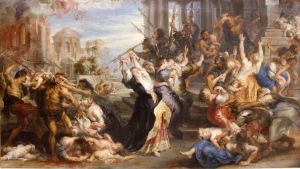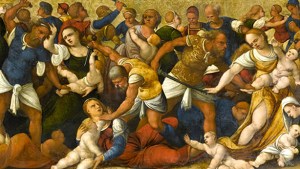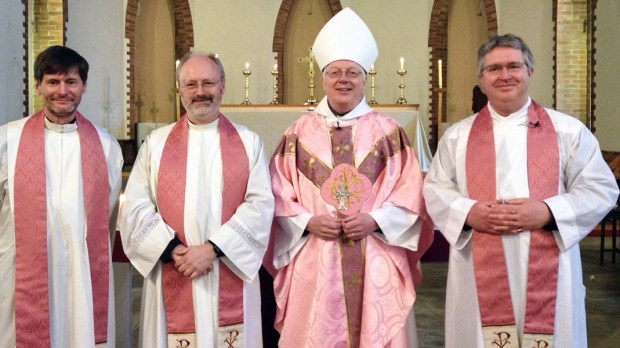In the current liturgical rubrics, the color red is prescribed for December 28, the feast of the Holy Innocents. It is a day that commemorates the “martyrdom” of all the male children in Bethlehem under the age of 2 who died at the decree of Herod the Great.

Read more:
How many Holy Innocents were killed by King Herod?
These children are seen by the Church as martyrs who died to protect the Christ Child, the Messiah who needed to stay alive until his future death on the cross.
However, prior to the Second Vatican Council, there were three different liturgical colors that were historically allowed in connection to this feast day.
Violet was frequently used, to highlight the mournful aspect of this day, while red was worn if the feast day fell on a Sunday.
Additionally, rose was also permitted in certain locations on the octave day (eighth day after December 28), and the symbolism of these three colors is described in The American Ecclesiastical Review published in 1902.
On Holy Innocents violet is ordinarily used at the Mass and Office. For the spirit of the feast indicates a twofold sentiment—that of sorrow with the weeping Hebrew mothers, and that of limbo where the little Innocents were necessarily to be detained until after the sealing of our Redemption in the Resurrection of our LordBut when the feast of Holy Innocents happens on a Sunday, its spirit mingles with that of the joy peculiar to the octave of Christmas … Hence the Church does not permit violet, which is the color both of sorrow and of penance, on Sunday, indicating by the red color that on that day she forgets the sadness and regards the little victims of Bethlehem simply as martyrs of Christ.However, on the eighth day of Holy Innocents she uses rose color. Rose is red tempered by white. Red is the martyr’s sign; white the vane of peace and truth and innocence. Thus the Church indicates by the choice of this color on the eighth day, that at the termination of their course of martyrdom these little ones obtain the heavenly reward of innocence; they are virgins that have passed through the purifying process of a singular baptism by blood … white and red commingled mark the color of our little Innocents in fair, scarce-blushing rose.
There is much to contemplate about this feast of the Holy Innocents and the Church’s liturgy has tried to highlight various aspects of it over the centuries. The death of these little ones is sad, but we must also remember their union with Jesus in Heaven, imagining what they must feel being placed into his loving arms for all eternity.

Read more:
An Examination of Conscience for the Feast of the Holy Innocents

